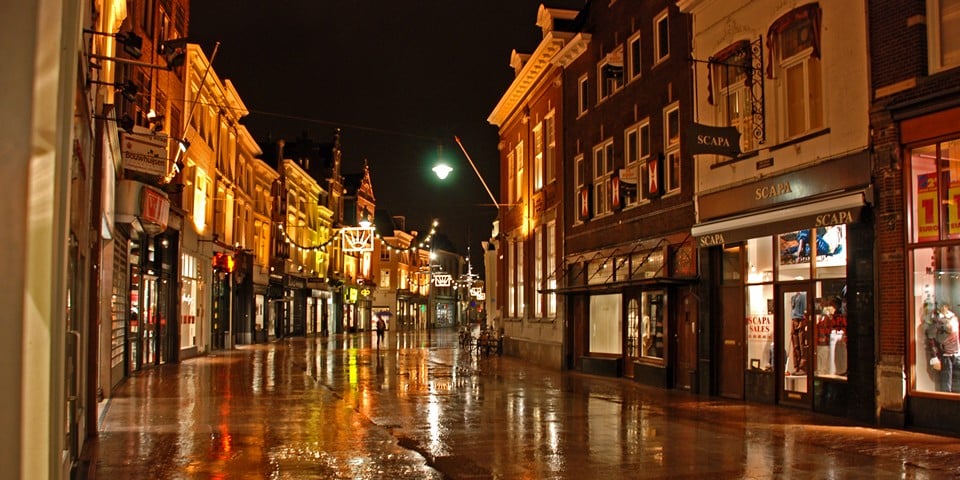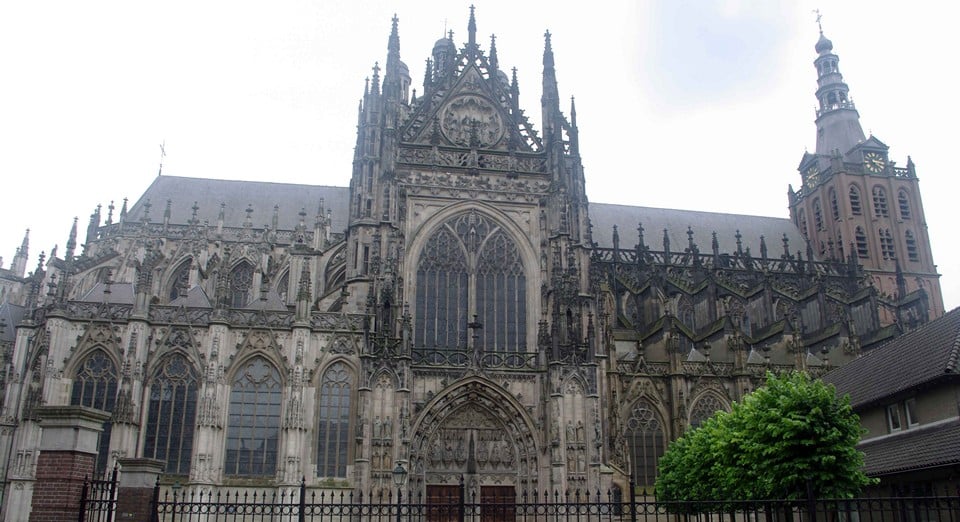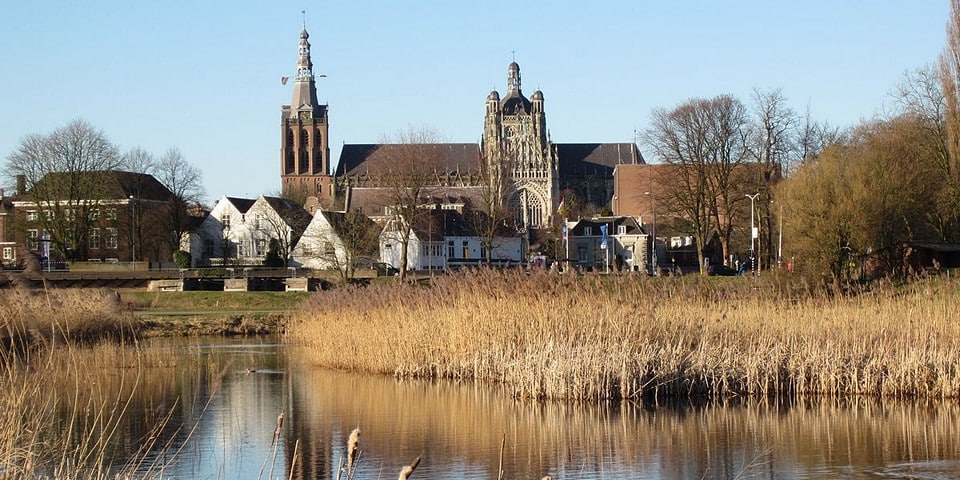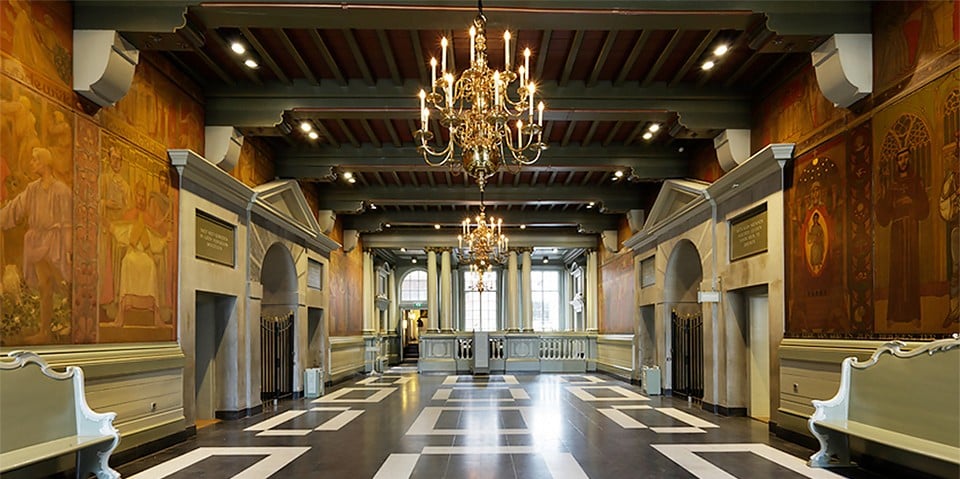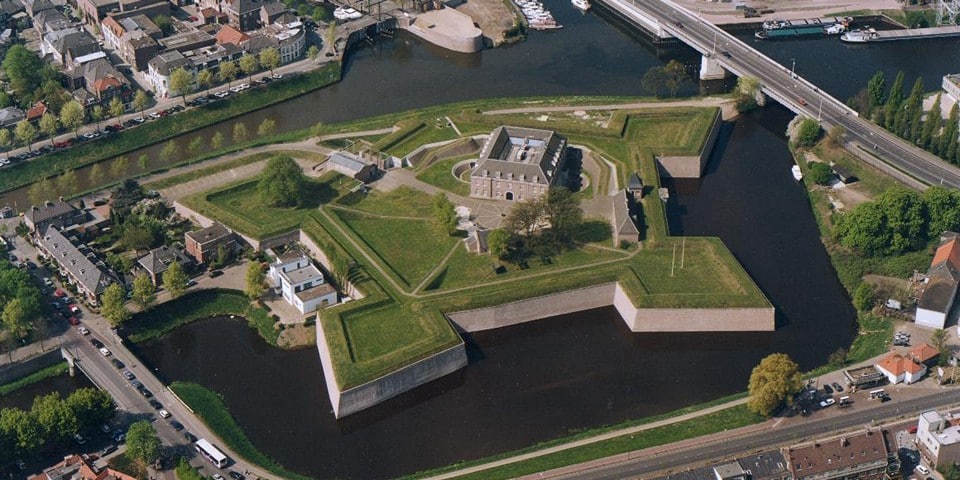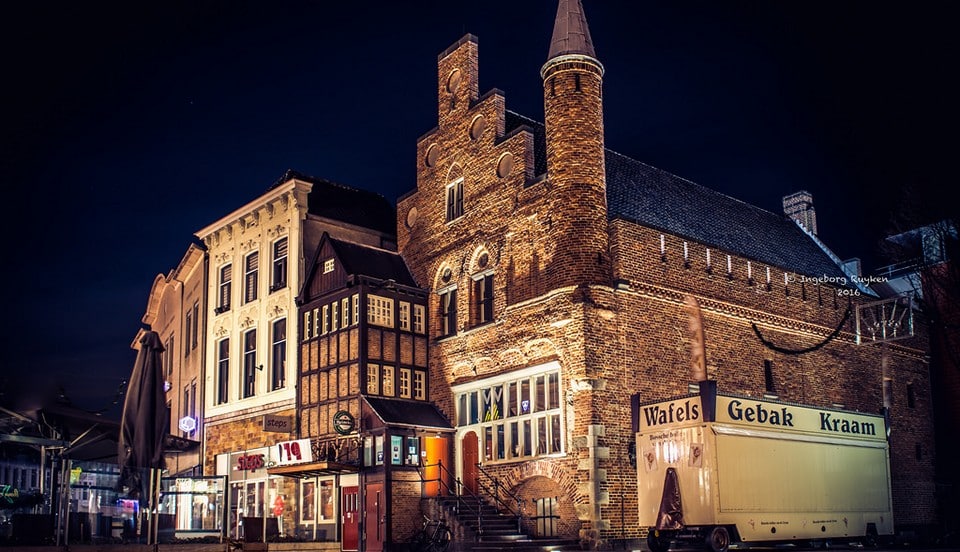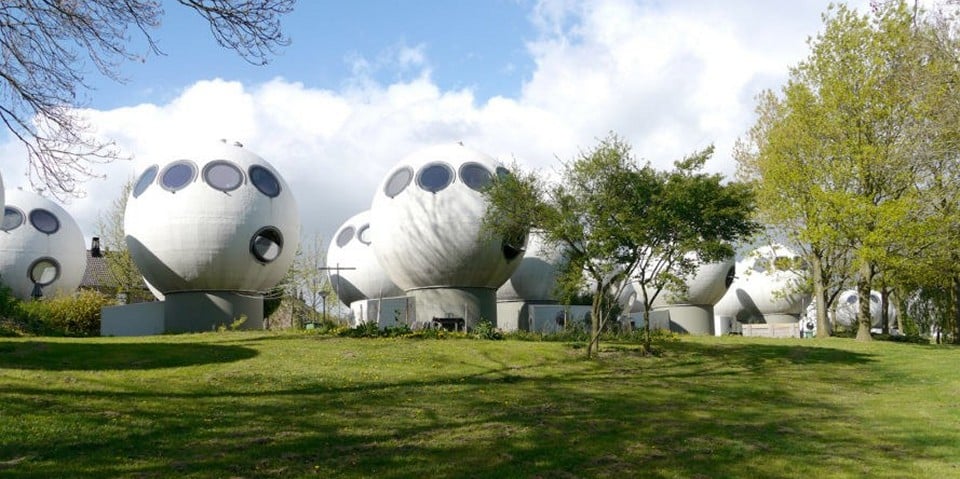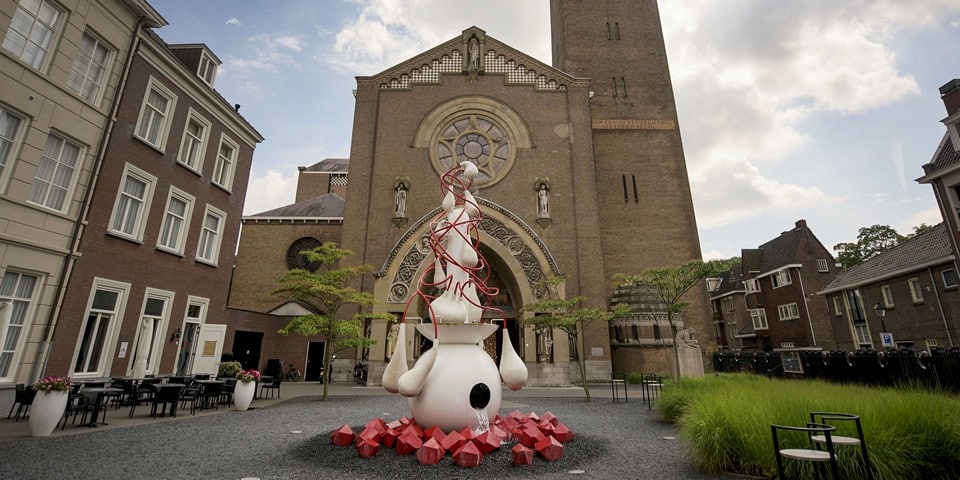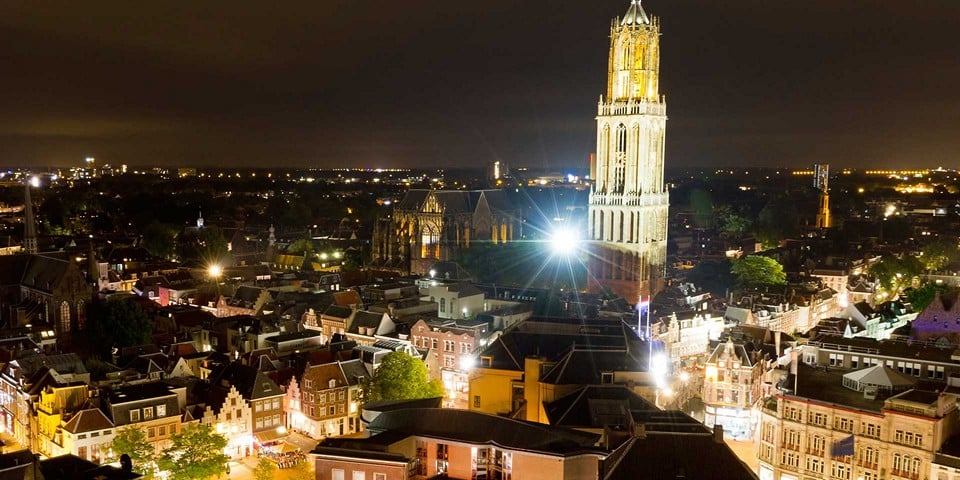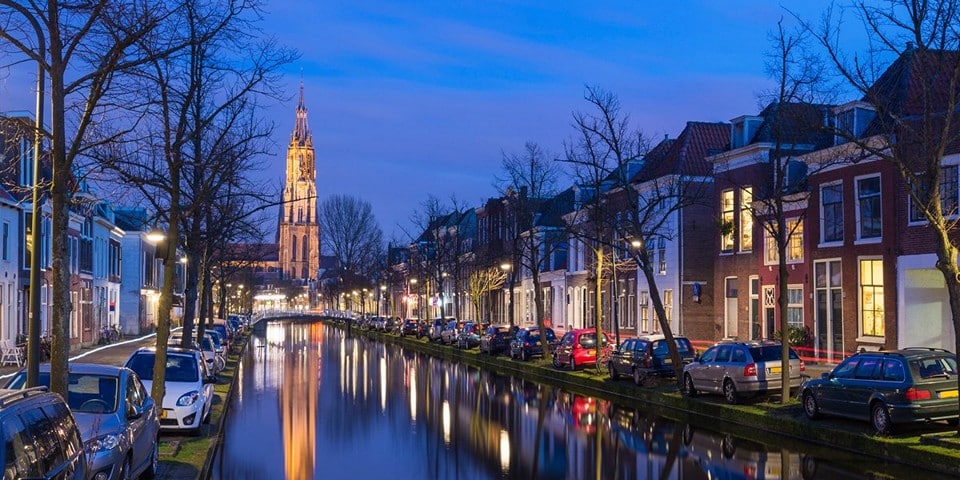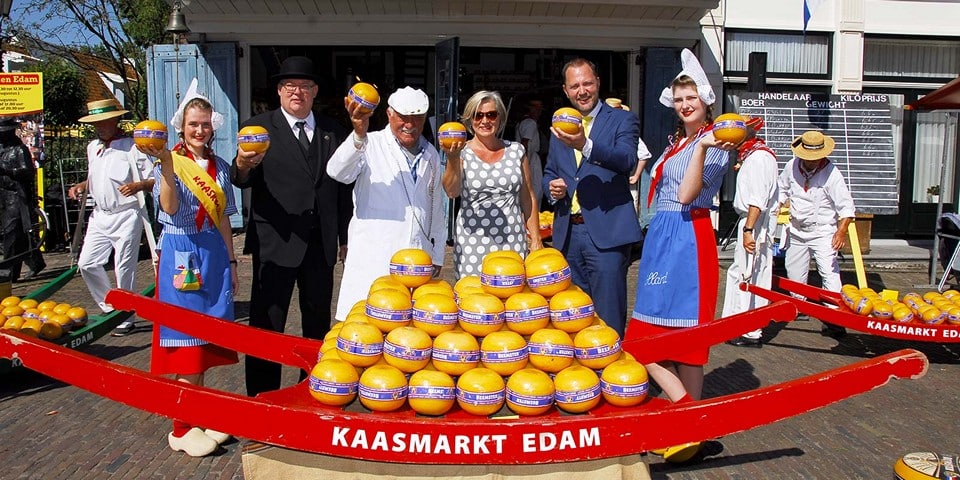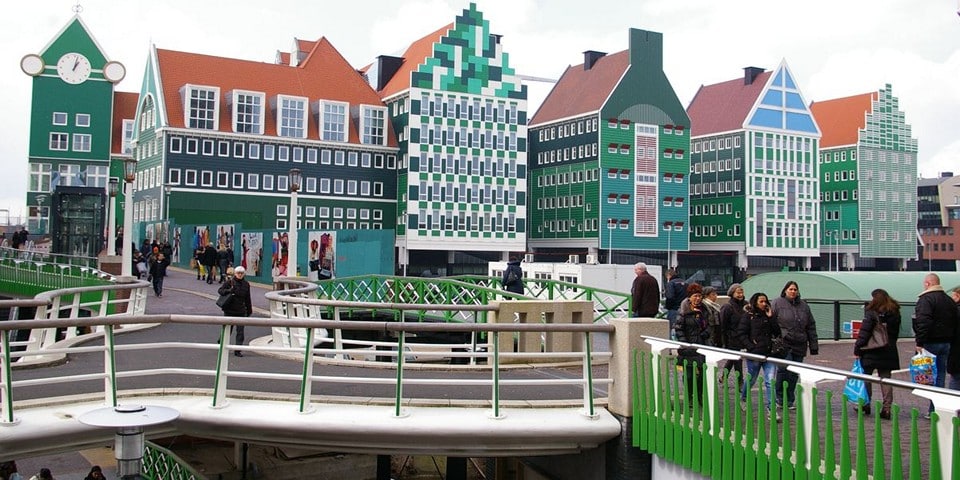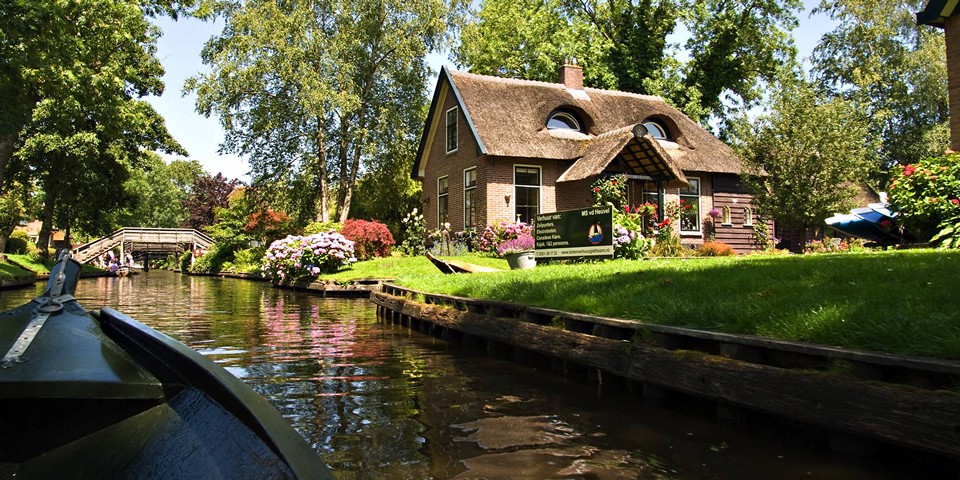Sightseeing Hertogenbosch ('s-Hertogenbosch) - underground water canals, fortress walls, forts, castles, medieval houses. In addition, this is the city where the famous Dutch artist Jheronimus Bosch was born, lived and worked, whose works were several centuries ahead of their time.
Geography
Hertogenbosch (abbreviated as Den Bosch or Den Bosch), is the administrative center of the province of North Brabant (Noord-Brabant), which occupies a large part of the south of the Netherlands. From Amsterdam, the capital of the country, 's-Hertogenbosch is located 80 km in a straight line, 100 km along the highway to the south-east.
'Hertogenbosch area is 39.98 km2, where land occupies 36.38 km2, water - 3.6 km2. Almost 108 thousand people live in the city. Thus, 1.8 thousand inhabitants live on one square kilometer. It should be borne in mind that De Bosch is also a municipality (this is how cities are called together with the adjacent suburbs and villages). Therefore, the total area of 's-Hertogenbosch is almost 91.8 km2, inhabited by about 150 thousand inhabitants. This explains the different interpretations of the area and the number of inhabitants of the city in the Dutch, Russian and English versions of Wikipedia.
De Bosch is strategically located very favorably. The river Maas, also known by the name Meuse (from the French Meuse), flows along the northern border of the city. The rivers Aa River, Dommel, South Villemsvaart (Zuid-Willemsvaart), Dieze run through it. They form a network of canals, as well as large lakes (Oosterplas), among which Ertveld Plas, Engelermeer, De IJzeren Vrouw, Noorderplas, Rosmalense Plas can be distinguished.
History
The history of 's Hertogenbosch is closely related to the war. Initially, it was founded as a fortress city, whose task was to protect the count's lands, and then constant hostilities until the end of World War II did not give peace to the inhabitants of the city.
Early period
Translated from Dutch, the name of the city of 's-Hertogenbosch means "ducal forests". Even before the founding of the city, there were hunting grounds of the Counts of Louvain (graven van Leuven), then - Henry I (Hendrik I), the first Duke of Brabant. At the beginning of the ninth century, on the territory of modern 's-Hertogenbosch, there was the count's villa Orthen, around which people began to settle, a village was formed, and a market arose.
In 1184, Count of Louvain, Gottfried III the Bold, father of Henry I, granted the village city rights. The city initially became a military base, since the count had to defend the northern border of the possessions, which ran along the Meuse River. Although the construction of fortifications proceeded at a rapid pace, by 1203 the city was still weakly defended, so the combined troops of Gerden and Holland (Gelre en Holland) burned it. Nevertheless, De Bosch quickly recovered - and by 1225 was fortified by walls, an earthen rampart, a palisade and protected by the swamps surrounding the city.
'Hertogenbosch was the fourth most important city in the Duchy of Brabant. Trade and industry were actively developing here, and he himself quickly grew from 9 to 100 hectares. After the completion of the construction of the second fortress wall in the 15th century. De Bosch after Utrecht became the second largest city in what is now the Netherlands. At this time, such famous people as the artist Hieronymus Bosch and the writer Georgius Macropedius lived and worked here.
Channels also appeared at this time. Above some of them, houses were subsequently erected due to lack of land. Thanks to this, today residents and guests of the city can go on a unique journey through the system of underwater streams.
Formation of the city
At the end of the XVI century. in the Netherlands, an uprising began against Spanish rule and Catholicism. Nevertheless, the inhabitants of De Bosch sided with the Catholics, and therefore with Spain. The city survived several major sieges by the Dutch, but for more than half a century 's-Hertogenbosch remained impregnable.
This was until, in 1629, the new commander, Frederik Hendrik van Oranje, ordered the construction of a dam, which blocked the flow of the Domel and Aa rivers to the city. This led to the draining of the marshes surrounding De Bosch - and after several months of the siege, 's-Hertogenbosch was taken. Although the city was then ruled by the Republic of the United Provinces (Republiek der Zeven Verenigde Nederlanden) for a long time, few of the inhabitants converted to Protestantism. Catholics at this time had a hard time, since religious freedom did not exist in the city.
In 1794 the 's-Hertogenbosch was captured by Napoleon's troops. He had no problems with the siege, since the local Catholics looked at him as a liberator. After Bonaparte's defeat in 1815, the United Kingdom of the Netherlands (Verenigd Koninkrijk der Nederlanden) was formed. De Bosch became part of it and became the main city of North Brabant.
Until 1878, the city authorities prohibited the construction of houses outside the city fortifications, which led to overcrowding. As a result, the underwater channels became a trash heap, and De Bosch turned into an extremely smelly city. At the same time, it had the highest infant mortality rate in the country.
After the Nazis captured the Netherlands in 1940, 5 km south of De Bosch, in the city of Vught, they set up a concentration camp, which was a transit point. Through it passed 31 thousand prisoners, who were sent from here to Auschwitz and Bergen-Belsen. De Bosch was freed from Nazi occupation at the end of October 1944.
Attractions
There are half a thousand monuments of national importance in De Bosch. The defenses of 's-Hertogenbosch deserve special attention. The city walls here are among the oldest well-preserved fortifications of its kind in the country. It is also interesting to see the citadel, town hall, the oldest brick house in the Netherlands, round houses. A special place in the architecture of the city is occupied by the Cathedral of St. John, one of the most beautiful churches in the Netherlands. The central square of the city is the Market Square (Markt), located in the south of 's-Hertogenbosch.
Cathedral of st. John
Cathedral of St. John (Sint-Janskathedraal) is a prime example of Brabant Gothic and one of the most beautiful temples in the country. Its rich decoration, both outside and inside, is strikingly different from other temples in the Netherlands.
The construction of the cathedral began in 1220, and the main construction ended in 1340. Nevertheless, the temple was repeatedly rebuilt, and acquired its final appearance by 1530. By this time, the width of the landmark was 62 m, the length - 115 m, the height of the tower - 73 m.When the Spaniards left the city, the Catholics were evicted from the cathedral and here they became conduct Protestant services.
After the capture of the city by Napoleon, the building was returned to the Catholic Church.
Cathedral of st. John the Evangelist is decorated with numerous statues and 16 double flying buttresses (a kind of outdoor stone semi-arch). Here you can see sculptural compositions both on Christian themes and allegorical subjects. Among them are the return of the prodigal son, the battle of Samson and the lion, the rider on the sphinx, dragons, various artisans and even an angel with a cell phone. There are many interesting church utensils inside the cathedral. Paintings, a font from 1492, a wooden pulpit decorated with carvings, a magnificent altar decorated with scenes from the life of Christ. Stained-glass windows of the 19th century also attract attention, telling about the seven sacraments and other Christian subjects.
At the moment, the Cathedral of St. John is owned by the Catholic Church and is open to viewing. Tourists can visit the cathedral, museum and climb the tower, walk on the roof of the cathedral.
- Address: Torenstraat, 16;
- Web site: www.sint-jan.nl;
- Opening hours from April 1 to October 31: Tuesday-Sunday from 9:30 to 17:15, on Monday - from 12.30 to 17.15;
- Opening hours from November 1 to March 31: Tuesday - Saturday from 11 to 15, Sunday from 12 to 15, Monday - closed;
- The museum is open: from Tuesday to Sunday from 13 to 16;
- Fee for visiting the cathedral and the cathedral (for each ticket you have to pay separately): adults 5 €, from 4 to 12 years old - 2.5 €, up to 3 years free;
- Museum entrance tickets: adults 3 €, up to 12 years free.
Town hall
The town hall of 's-Hertogenbosch (Stadhuis) was built in the second half of the 14th century. In 1372, a bell was hung on the belfry, after which the construction was completed. In 1430 the building was badly damaged by fire and had to be restored. After De Bosch was occupied by the reformers, the town hall changed its appearance somewhat. After that, the basement premises began to be rented out for various receptions. Also in the basements were city guards, after a while they placed a dungeon.
In 1669, the town hall was badly damaged by a fire, which is why it was decided to radically rebuild it. As a result, the Gothic was replaced by the classics, which were supposed to emphasize the importance of the institution. In the XX century. the city hall was restored again. The rear facade was supplemented with a gallery, two new porches were built, and some rooms were renovated.
Now inside the building there are marble floors, chandeliers, tapestries, walls and ceilings are decorated with paintings. The wedding hall features gilded leather wallpaper and a Louis XVI style fireplace. Since 1657, a carillon, made eight years earlier by the Hemony brothers, hangs in a small tower. An old bell from the 14th century has also survived.
- Address: Markt, 1;
- Web site: www.denbosch-cultuurstad.nl.
Fort
The Citadel is located 800 m from the Market Square. It is equipped with 4 bastions, surrounded on all sides by the rivers Aa River, De Dieze, Zuid-Willemsvaart, Dommel.
The fort appeared in the middle of the 17th century, on the site of old defensive structures by order of the authorities of the Republic of the United Provinces, which wanted in this way to control the rebellious Catholic population of the city. In addition, the citadel's task was to protect the country's lands from outside invasion.
At the end of the 18th century. The fortress lost its defensive significance - and here they set up barracks, where during the war they housed a dungeon and a tribunal. In 1823, the Zuid Willemsvaart canal was laid nearby, for which part of the fort had to be demolished. Now the attraction belongs to the state. The archive and the Historical Information Center are located here.
- Address: Zuid Willemsvaart, 2;
- Web site: bhic.nl;
- Working hours: from 9 to 18, Sunday is a day off.
Morian mansion
One of the oldest brick mansions in the Netherlands is the De Moriaan house. The building was erected by order of the Duke of Brabant in the 13th century. Presumably, the house was originally part of the city walls surrounding Rynok Square.
Several centuries later, Protestants gathered here, the bishop's residence was located. In the XVII century. the first city theater performed inside the landmark. Then, at different times, a store, a warehouse, and a barracks were set up in the mansion. In 1956, the authorities wanted to demolish the house to make way for a road, but then they abandoned the idea.
Instead of this the De Moriaan mansion was restored and declared a state monument. Now there is a tourist office, in the basement there is a bar.
Address: Markt, 77.
Round houses
Among the modern attractions of 's-Hertogenbosch are the Round Houses (Bolwoningen), which were built in the early 80s. last century designed by architect Dries Kreijkamp. For the construction of a complex of 50 buildings, the government allocated money under a special program that finances experimental housing.
The buildings are balls of concrete and fiberglass that stand on a cylindrical base. The diameter of the sphere is 5.5 m, the base is 3 m. Inside there is a compact apartment, which, thanks to round windows and curved walls, resembles a spaceship. Each house has three floors. On the first one there is a bedroom, on the second - a bathroom and a toilet, on the third - a living room and a kitchen.
For his designs, Craikamp chose the shape of a sphere, because he considered it to be the most natural in nature. In addition, due to the design, such an action is little affected by the winds, and the houses are equipped with an energy-saving heating system. Bolwoningen is currently fully inhabited.
Address: Bollenveld, 91
Jerome Art Center
Bosch
Despite the fact that Hieronymus Bosch lived and worked in 's-Hertogenbosch, the artist's works are not left here. In the Netherlands, the master's canvases can be seen only in the Museum Boijmans Van Beuningen, one of the largest museums in the country, located in Rotterdam (Rotterdam).
To compensate for the loss, in 2007 in the homeland of the great painter, in the former church of Nieuwe Sint-Jacobskerk, it was decided to open the Jheronimus Bosch Art Center, and place there life-size photo reproductions of all the artist's works. In one of the rooms, the authors recreated Bosch's workshop, where you can see the setting in which Hieronymus Bosch worked. The rooms of the museum are decorated with tapestries depicting scenes from the master's canvases. Also, lectures on the life and work of Bosch are constantly held here.
To get the most positive experience, you can first take a transparent elevator to the 40-meter tower, from where a picturesque view of De Bosch opens. Then go downstairs on foot, and on the way look at the photo reproductions of the artist's paintings, located on four floors.
- Address: Jeroen Boschplein, 2;
- Web site: www.jheronimusbosch-artcenter.nl;
- Opening hours: from 11 to 17.30, closed on Monday;
- Entry tickets: adults - 7 € (the price includes a catalog, including in Russian), from 4 to 12 years old - 3.5 €.
How to get
Amsterdam is located at a distance of one hundred kilometers from 's-Hertogenbosch, so it takes about an hour to get expensive. The most convenient way to get to De Bosch is by train or car.
By train
The train from Amsterdam to 's-Hertogenbosch can be reached from several stations. It should be noted that both direct flights and with a transfer in Utrecht are provided. Trains run every 15-20 minutes, the first run leaves at 6 am, the last one at midnight.
- Amsterdam Centraal - for a ticket in the second class you have to pay 15.3 €, in the first - 26 €. The road will take 57 minutes;
- Amsterdam Airport - second class costs 16.3 €, first class 27.7 €. On the way, the train spends 1 hour 7 minutes;
- Amsterdam Amstel - a ticket in the second class costs 14.5 €, in the first class - 24.7 €. The journey takes 48 minutes;
- Amsterdam Bijlmer ArenA - first and second class will cost 23.6 € and 13.9 €, respectively. The flight lasts 50 minutes.
More details about the schedule, prices and route can be found on the website www.ns.nl.
By car
The road from Amsterdam to 's-Hertogenbosch along the highway takes 100 km. First, take the A10 motorway via s100 and s114 and follow it to the A2 motorway, then head towards Gestelseweg ('s-Hertogenbosch). From A2, take exit 22-St. Michielsgestel, outskirts of De Bosch. Then go along Gestelseweg and Van Veldekekade towards Hinthamerstraat.
Why come here
The sights of 's-Hertogenbosch should be seen by anyone interested in the work of Hieronymus Bosch. Perhaps this will help to understand how the painter of the XV century. managed to get ahead of their time by five hundred years. Here you have the opportunity to look at the unique medieval architecture, visit interesting museums, as well as go on a journey along the underground canals of De Bosch, which not every tourist city can offer.
